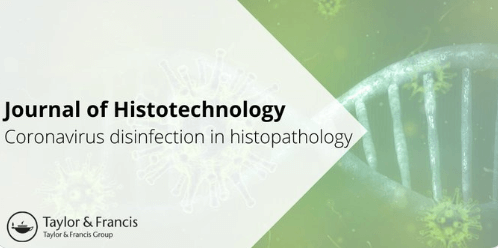 The 2019 Coronavirus epidemic, provisionally called 2019-nCoV, was first identified in Wuhan, China, in persons exposed to a seafood or wet market. There is an international push to contain the virus and prevent its spread. It is feasible that potentially infectious samples may be received in histopathology laboratories for diagnosis. This technical note presents disinfection procedures and histotechnology processes that should alleviate the risk of infection to laboratory staff. Using data obtained from similar coronaviruses, e.g. severe acute respiratory syndrome (SARS) and Middle East respiratory syndrome (MERS), experts are confident that 70% ethanol and 0.1% sodium hypochlorite should inactivate the virus. Formalin fixation and heating samples to 56 degrees C, as used in routine tissue processing, were found to inactivate several coronaviruses and it is believed that 2019-nCoV would be similarly affected.
The 2019 Coronavirus epidemic, provisionally called 2019-nCoV, was first identified in Wuhan, China, in persons exposed to a seafood or wet market. There is an international push to contain the virus and prevent its spread. It is feasible that potentially infectious samples may be received in histopathology laboratories for diagnosis. This technical note presents disinfection procedures and histotechnology processes that should alleviate the risk of infection to laboratory staff. Using data obtained from similar coronaviruses, e.g. severe acute respiratory syndrome (SARS) and Middle East respiratory syndrome (MERS), experts are confident that 70% ethanol and 0.1% sodium hypochlorite should inactivate the virus. Formalin fixation and heating samples to 56 degrees C, as used in routine tissue processing, were found to inactivate several coronaviruses and it is believed that 2019-nCoV would be similarly affected.
The outbreak of a novel coronavirus disease (provisionally known as 2019-nCoV) in Wuhan, China has spread to 26 countries worldwide. This coronavirus is an acute resolved disease, but it can also be deadly, with a 2% case fatality rate. Severe disease onset might result in death due to massive alveolar damage and progressive respiratory failure. As of Feb 15, about 66,580 cases have been confirmed and over 1,524 deaths [1]. The World Health Organization (WHO), on 11 February 2020, officially named the virus COVID-19 [2]. The Coronavirus Study Group of the International Committee on Taxonomy of Viruses decided that the virus is a variant of the coronavirus that caused an outbreak of severe acute respiratory syndrome (SARS) in 2002–03. Therefore, this committee named the new pathogen Severe Acute Respiratory Syndrome Corona Virus 2, or SARS-CoV-2 [3].
Since it is possible that infected samples may be submitted to histopathology laboratories for diagnosis, it is important for us to take adequate precautions to protect ourselves and our staff. The World Health Organization [4] recommends that all specimens collected for laboratory investigations should be regarded as potentially infectious. Health-care workers who collect, handle, or transport any clinical specimens should adhere rigorously to the standard precaution measures and biosafety practices listed, to minimize the possibility of exposure to pathogens.
1. Ensure that health-care workers who collect specimens use appropriate personal protective equipment (PPE) i.e. eye protection, a medical mask, a long-sleeved gown, and gloves. If the specimen is collected with an aerosol-generating procedure, personnel should wear a particulate respirator at least as protective as a NIOSH-certified N95, an EU standard FFP2, or the equivalent.
2. Ensure that all personnel who transport specimens are trained in safe handling practices and spill decontamination procedures.
3. Place specimens for transport in leak-proof specimen bags i.e. secondary containers, that have a separate sealable pocket for the specimen i.e. a plastic biohazard specimen bag, with the patient’s label on the primary specimen container and a clearly written laboratory request form.
4. Ensure that laboratories in health care facilities adhere to appropriate biosafety practices and transport requirements, according to the type of organism being handled.
5. Deliver all specimens by hand whenever possible. DO NOT use pneumatic-tube systems to transport specimens.
6. Document clearly each patient’s full name, date of birth and suspected 2019-nCoV of potential concern on the laboratory request form. Notify the laboratory as soon as possible that the specimen is being transported.
The Centers for Disease Control and Prevention (CDC) has also released an Interim Laboratory Biosafety Guidelines for Handling and Processing Specimens Associated with Coronavirus Disease 2019 (COVID-19) and these are summarized in Table 2 (https://www.cdc.gov/coronavirus/2019-nCoV/lab/lab-biosafety-guidelines.html).
Unfortunately, little is known about the appropriate disinfectants for 2019-nCoV, nor the safety of histological fixation and processing but experts have proposed that effective disinfectants for other coronaviruses (e.g. SARS and MERS) should inactivate 2019-nCoV.
Click here to continue reading this technical note in the Journal of Histotechnology.
You can find additional, up to date, information about the Coronavirus on this reading list, provided by the Journal of Histotechnology publisher, Taylor and Francis. They have also provided other published works on the Coronavirus through this search of their journals.
Written by Anthony F. Henwood
#2020#Blog#LaboratoryOperations